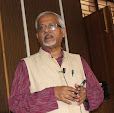
The traditional hulla-gulla (noise and din) that was associated with electioneering is passé now. The focus has shifted to ads in major national dailies. But there is a catch. GoI ministries are not loosening their purse strings for these ads.
CJ: Arindam Roy, 7 hours ago Views: 164 Comments: 2
THE CONGRESS-led United Progressive Alliance (UPA) government has been splurging full page and half page advertisements in major national dailies in New Delhi and Mumbai.
“Though all political parties have every right to speak of their achievements, they also need to be sensible about the plight of the masses,” said Eshna, who works with an event management company in Mumbai.
She added, “The government is screaming about its achievements from rooftops, despite recession and economic slowdown. There seems to be a total disconnect between the political parties and the people.”
These ads are released by various ministries of the government of India. The peg seems to be Bharat Nirman. Sample some headlines:
• Coal - the mainstay of India’s energy security, issued by the ministry of Coal
• Five glorious years of growth, issued by the ministry of New and Renewable Energy
• Foundation stone of new integrated terminal building of the airport at Vadodra, issued by the Airport Authority of India
• Inauguration of new terminal building of the airport at Surat, issued by the Airport Authority of India
• Five years of sunrise sector
Needless to add these ads feature photographs of the respective ministers, local MPs, MLAs, other than Prime Minister Manmohan Singh and UPA chairperson Sonia Gandhi.
There is a major catch. Though several ads are appearing on behalf of the ministries, the payments for these ads are not being made by any ministry, informed two senior bureaucrats, on conditions of anonymity. They are working with two ministries, in New Delhi.
In a telephonic interview, one of them said (ministry’s name withheld on request), “Our ministry received complaints under the right to information (RTI) from some applicants. The complainants asked questions like, with whose permission these ads are being released, who finalised the designs, who decided whose photographs must be published in these ads, etc.”
He added that the complaint was possibly a protest against publishing Sonia Gandhi’s picture, as one complainant even mentioned her name. “The process of reply would take its time (all RTI complaints have to be dealt within a fixed time-frame), but the fact is that no ministry is making any payment for these ads.”
When asked to clarify, he just mentioned, laughing, “Sorry, you are being too nosey.”
The second bureaucrat, after initial hemming and hedging explained that he would give a hint. “All economic ministries (which have PSUs, etc under them) are asked to ‘arrange’ these ads. If you look at the Civil Aviation ad, you may see small inserts of various private airlines in it. Rest I leave for you to decide....”
Thus, it’s clear, from his oblique admission that PSUs and private players pay for the government’s achievements. He clarifies, in a matter of fact way that these PSUs and private players have been funding elections, one way or the other, all these years.
Meanwhile, the Congress MLA from City North, Allahabad, Anugrah Narain Singh, in an exclusive interview, explained that ad war is a common feature in the run up to the election, as well as during the polls. In the recent past, the ad spend of major political parties has been on the rise.
“The traditional hulla-gulla (noise and din) that was associated with electioneering is passé now. Ever since the election commission (EC) has tightened its noose, banned rampant postering, defacing of walls – a welcome change, certainly, the focus has shifted to the media. Press conferences, space selling by newspapers have replaced the tamasha on the roads,” he explained.
Singh added that the EC allows the government to speak of its achievements. Party manifestoes too find a place in the ads. Defending the UPA government, he said, “There is nothing wrong with such ads. Congress does not twist facts.”
Replying to the possible date of the model code of conduct coming into force, he informed, “Thursday (Feb 26) is the last day of the 14th Lok Sabha. The EC may announce the model code of conduct, coming into force, from any day, in the first week of March, this year.”
He pointed out a full-page write-up with photographs, published in a local Hindi daily, speaks eloquent about a Brahman Maha Sammelan, at KP Ground, of Bahujan Samaj Party, on Wednesday (Feb 25).
The full page matter is a cross between an advertisement and an editorial report. Though a little shabby, it’s nothing short of an advertisement. It’s worth pointing out that while Times of India mentions such insertions as advertorials or ‘Response feature’, several other newspapers, including large publishing houses, often flout these norms with impunity.
(Link: http://www.merinews.com/catFull.jsp?articleID=15714242)












No comments:
Post a Comment